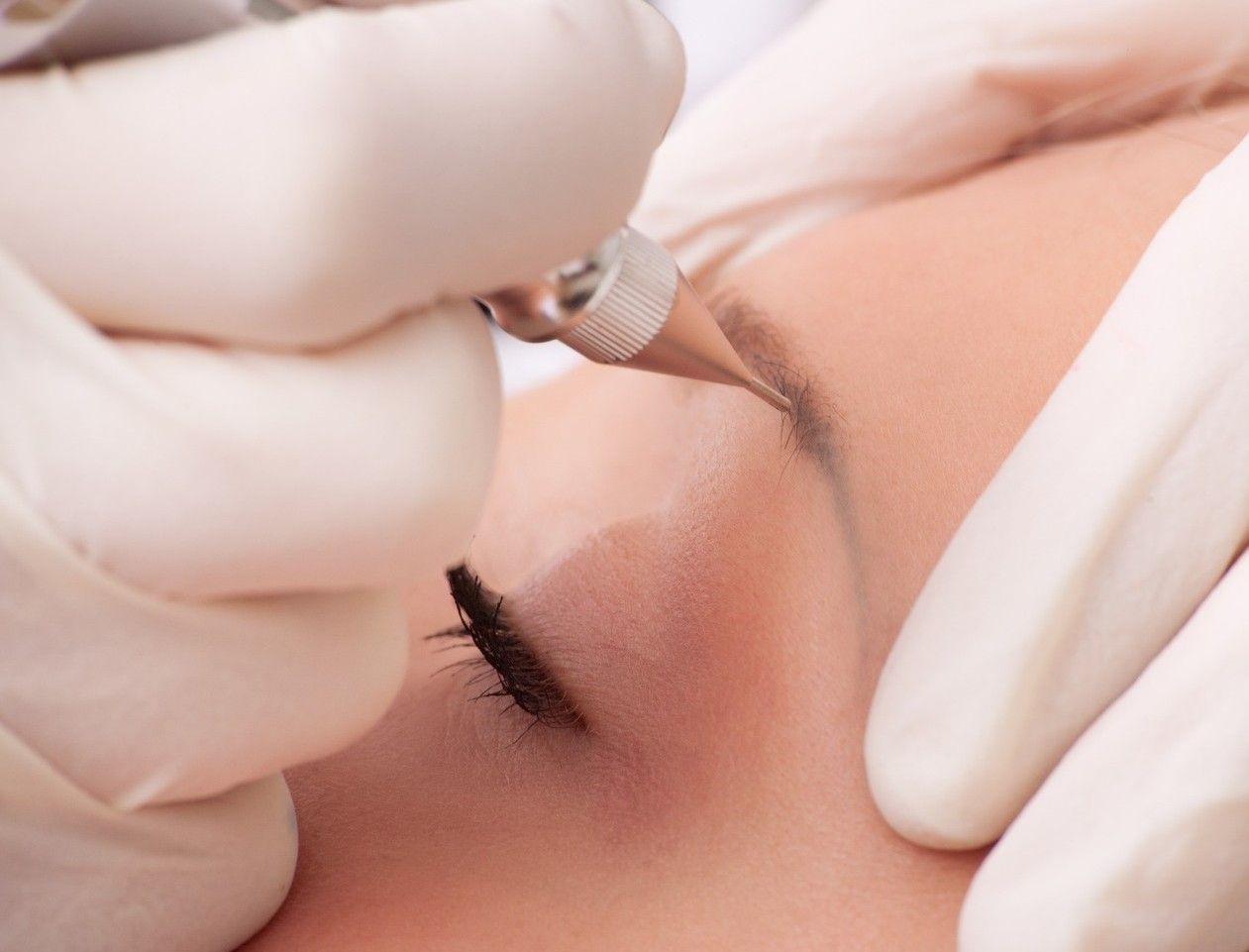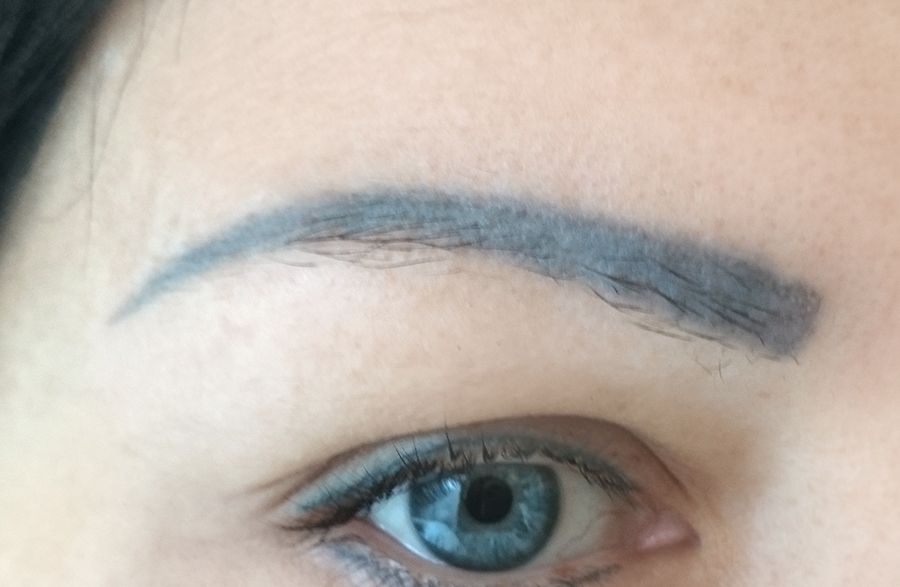How To Correct Permanent Eyebrows

The problem of blue eyebrows after a few years from getting them permanently pigmented is quite often. Quality of the pigments used plays the main role here, but not only. Usually, clients with this type of discoloration have old eyebrows tattoo, which was done many years ago with old aggressive techniques. Nowadays, we use different techniques like machine powder brows that look natural and fade nicely. It is not guaranteed that the procedure of color correction will be successful. If the old pigment is very saturated skin won't take more color and we need to send a client for removal.
Why Do Tattooed Eyebrows Turn Blue?

The main reason behind blue brows is the presence of heavy metals in pigments. It causes not only a higher risk of allergy and health issues but also discoloration. When choosing a technician don’t be afraid to ask about ingredients and pigment. Make sure they were tested in the laboratory and are of the highest quality.
Even the best quality pigment might look blueish after time, it happens when the Permanent Makeup Artist uses black pigment for eyebrows. Technician when choosing a color should pay attention, observe the skin type and consider your skin tone. The black pigment can be used only on eyelids for permanent eyeliner. In most cases used on eyebrows will look blue-greenish after time.
If for most of your life you were using black pencil on your eyebrows or henna don’t do it permanently. If the Permanent Makeup Artist uses too cold pigment on cold skin tone it might result in blue eyebrows. What's more aggressive and too deep microblading might also result in blue eyebrows. Deep pigmentation causes the pigment to get into blood vessels, this might result in a blue tattoo look. It is hard to remove blue eyebrows mostly laser removal is recommended.
Color correction of blue ink might take a few sessions and it is not always satisfactory to a client and technician. If you had laser tattoo removal, chemotherapy, or steroids treatment in the past, your skin might be very thin and light. Thin skin takes pigment differently, it needs special attention. Only slow, gentle work on the surface and use of not too cold pigment will give the best result.
Why Does Microblading Look Blue?
When the technician punctures your skin with a needle, it causes a tiny wound. Your body responds to all wounds by sending macrophages to close the wound and swallow up any foreign invaders. The pigment particles are too large for the macrophages to destroy them, so they get stuck in the dermis.
When the pigment is deposited into the skin, the body starts to metabolize, break down and remove pigment as a foreign substance. Smaller particles are metabolizing quicker than bigger ones. Larger molecules might stay forever. Yellow, oranges, and reds have smaller particle sizes, while blues and greens are larger.
When the body gets rid of yellow, orange, and reds you are left with blue and green. That’s why pigment blurs in the skin over time, even the sharpest lines. The pigmented spot will fade if your immune system ever succeeds in breaking up the pigment particles.
You Can Get Rid of Unwanted Pigment With Laser & Remover
Blue color won’t fade away by itself. There are two ways to deal with it. First is removal, we have lasers or removers - liquid lighting solution available on the market. There are different kinds of lasers as well as removers like saline or chemical liquid solutions. In some cases, a combination of both methods gives the best results. This process is long and requires some patience.
Color Correction of Old Permanent Makeup
Another option is to cover eyebrows with warm pigment, but please remember that after time the blue color most likely will come back. Before we decide about color correction we need to make sure that old pigment is faded at least about 50%. This warming-up has to be repeated after some time.
Some technicians deposit a large amount of orange pigment, so that takes longer for the body to metabolize it. Metabolism rates are different in each individual case. After correction with orange pigment, we use the target color, usually warm brown.
The client needs to be aware that color may require a refreshing session at some point since this will happen again.
